water/wastewater
Leading the industry since 1933.
Since its inception in 1933, H2M has been a leader in the field of water supply and wastewater treatment; once simply known as Sanitary Engineering. Providing a range of solutions that run the gamut of water/wastewater challenges, H2M’s water professionals have been recognized as best in class by American Council of Engineering Companies (ACEC) NY and NJ, where we took home the prestigious Diamond Award for The Town of Riverhead Water Resource Recovery Facility, Gold Award for Rehabilitation of Public Water Supply – Plant No.9 project and Honor Award for Engineering Excellence for Rapid Deployment Treatment Capacity Expansion project. Our Industry leaders and dedicated professional staff, coupled with exemplary service, provides our clients with innovative, yet practical results for all their project needs. Let H2M help solve your next challenging problem.

Our specialized water and wastewater services are designed to address the unique challenges in your community.
Sign up now to gain access to exclusive knowledge and personalized advice from our specialists.

James J. Roberts, P.E.
Sr. Vice President
Market Director, Water/Wastewater
James has more than 30 years of experience in the operations and maintenance of New York City’s water supply, distribution, wastewater collection, and stormwater management systems.
As former Deputy Commissioner of the NYC Department of Environmental Protection, James brings a unique perspective to H2M’s Water/Wastewater Market. Having managed one of the world’s largest water/wastewater utilities, he has worked with industry leaders at a national level and intimately understands the array of environmental challenges that are faced. His focus is on client satisfaction derived from providing the right solution to each unique problem.

-
Treatment Systems
-
Distribution Systems
-
Collection Systems
-
Pump Station and Force Main Design
-
Tank Design
-
Wastewater Reuse
-
Drainage Planning
-
Hydraulic Modeling
-
Green Infrastructure
-
Corrosion Inspection Services
-
Operations Support
-
Construction Real Estate Investment (REI) Services
-
Geographic Information System (GIS)
-
Supervisory control and data acquisition (SCADA) Systems and Integration
-
Trenchless Systems Design
-
Resiliency Designs
Projects
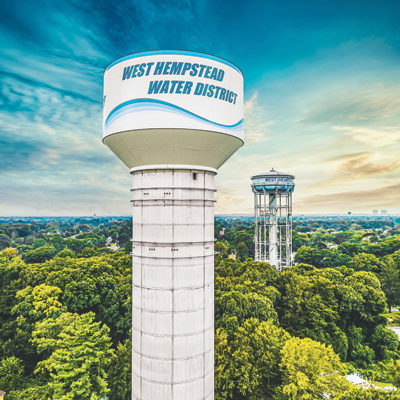

Composite Elevated Storage
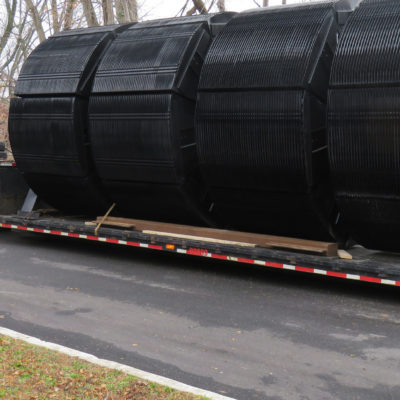

Huntington Sewer District-Replacement of RBCs at Wastewater Pre-Treatment Facility


Town of Riverhead-Advanced Wastewater Treatment Facility Wastewater Reuse for Golf Course Irrigation


NCDPW-Phase E2 – Unit Substation No. 2 and Electrical Distribution
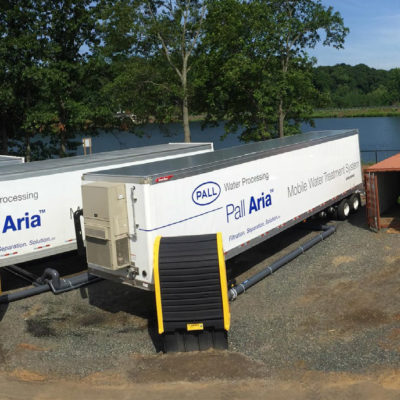

NJAW Coastal North Treatment Process & Chemical Feed Expansion


Village of Patchogue-Wastewater Treatment Facility Upgrade & Expansion


Water Authority of Western Nassau County (WAWNC)-Wellhead Treatment for VOC Removal
- Select site demolition across four sites
- Rehabilitation/reactivation of well and booster pumps
- Conversion of submersible well pumps to vertical well pumps
- Installation of four 27 foot tall air stripping towers with below grade clearwells
- Installation of transfer pumps and finished water pumps
- Installation of chemical bulk storage tanks and chemical feed systems
- Construction and/or rehabilitation of new and existing buildings
- Installation of generators
- Installation of motor control centers and power distribution
- Site piping and grading modifications
- Installation of new fences, gate operator, driveway, curbs and sidewalk


Borough of Spring Lake Heights-FEMA Hazard Mitigation Grant Reconstruction of Wastewater Pump Stations


Brick Township-Municipal Utilities Authority
- A component meets its standard both now and at the end of the planning period.
- A component meets its standard now, but may not meet it by the end of the planning period, either due to anticipated deterioration or different performance/capacity requirements in the future.
- A component does not meet its standard now. The components that are not expected to meet their standards by the end of the planning period will then be assigned criticality scores, which will be combined with the magnitudes of the gaps to develop risk priorities. The components will be compared to two primary sets of constraints or regulatory stressors: performance criteria with regard to supply resiliency, and performance criteria with regard to finished water quality and quantity. The regulatory framework established by the MUA’s Water Allocation Permit and various Permits-to-Operate (via Bureau of Water System Engineering) will provide a clear picture of existing constraints, and a starting point for evaluating the effects of future environmental changes and finished water quality requirements.
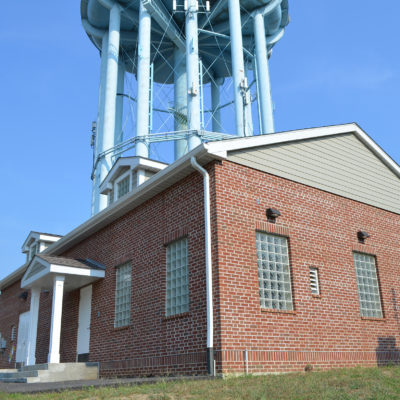

KEEPING UP WITH THE JONESES


JUICE MANUFACTURER GETS PLANT UPGRADE
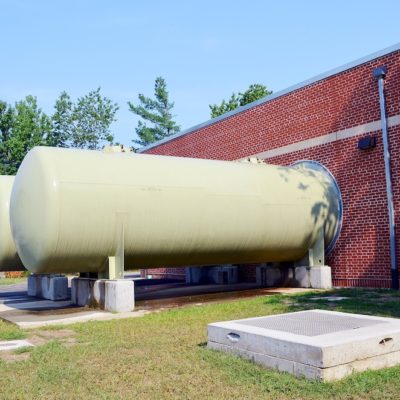

GREENSAND LENDS A HAND


PROTECTING LONG ISLAND’S AQUIFERS FOR THE FUTURE


SOUTH HUNTINGTON WATER DISTRICT OVERHAULED FROM THE TOP DOWN


PLAINVIEW LANDMARK RECEIVES A MUCH-NEEDED FACELIFT


COORDINATING A TANK REHABILITATION WITHOUT INTERRUPTING SERVICE
 Looking for a rehabilitation of one of their three water tanks, the City of Yonkers called H2M. After performing a structural and coating systems evaluation on the 1 million gallon steel elevated storage tank, H2M recommended full rehabilitation of the interior and exterior coatings. The existing systems were chipping, peeling and chalking, signs that they had reached the end of their expected service life. H2M also recommended installation of a passive Tideflex mixing system, which would allow the Water Department to easily turn over the tank’s contents and mitigate stagnant water inside the tank.
Construction was timed to start in the fall, after the City’s pumping season ended. Early winter weather caused a delay that put the project at risk of missing the next pumping season. Reworking the schedule, H2M directed the interior coating and the Tideflex installation during the winter months, and the exterior prep and paint work in the spring. The schedule was met and the project completed on time.
H2M provided the traditional services of contract administration and construction inspection as well as a newer, but much needed service, cellular coordination. As water towers are often the tallest structures in the area and cell phone networks continue to fill in their missing service areas, the two have come together, with cell phone antennas mounted to the exterior of the water tank. For the City of Yonkers, their 202 foot tall tank was home to 18 antennas from multiple wireless phone companies. H2M coordinated the removal and re-installation of antennas, routing of conduits, and upgrade of equipment during the rehabilitation.
Looking for a rehabilitation of one of their three water tanks, the City of Yonkers called H2M. After performing a structural and coating systems evaluation on the 1 million gallon steel elevated storage tank, H2M recommended full rehabilitation of the interior and exterior coatings. The existing systems were chipping, peeling and chalking, signs that they had reached the end of their expected service life. H2M also recommended installation of a passive Tideflex mixing system, which would allow the Water Department to easily turn over the tank’s contents and mitigate stagnant water inside the tank.
Construction was timed to start in the fall, after the City’s pumping season ended. Early winter weather caused a delay that put the project at risk of missing the next pumping season. Reworking the schedule, H2M directed the interior coating and the Tideflex installation during the winter months, and the exterior prep and paint work in the spring. The schedule was met and the project completed on time.
H2M provided the traditional services of contract administration and construction inspection as well as a newer, but much needed service, cellular coordination. As water towers are often the tallest structures in the area and cell phone networks continue to fill in their missing service areas, the two have come together, with cell phone antennas mounted to the exterior of the water tank. For the City of Yonkers, their 202 foot tall tank was home to 18 antennas from multiple wireless phone companies. H2M coordinated the removal and re-installation of antennas, routing of conduits, and upgrade of equipment during the rehabilitation. 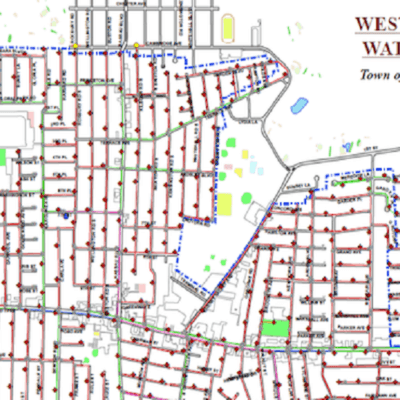

NEW GEOMETRIC NETWORK IMPROVES SERVICE AND QUALITY
 When West Hempstead Water District was ready to start developing their digital water supply and distribution system management program, they asked H2M to create a new GIS. In the process, we converted their existing AutoCAD-based distribution map into an ArcGIS geodatabase format. The new GIS map contains over 15 themes, including roadways, street names, water mains, valves, fire hydrants, tanks, buildings, parcels, and municipal boundary lines.
The water distribution system was also digitized into a “geometric network” format. This format allows the District to perform special GIS functions in the future, such as plotting a main break and automatically identifying which valves need to be closed. In addition, the District could automatically determine which customers are affected by the break and generate notification emails.
Distribution system water mains, valves and fire hydrants were all placed into the GIS along with the available attribute data, such as main sizes. Over 167 historical valve sketches and field notes were scanned and hyperlinked to their respective geographic valve locations. We provided and installed the new GIS on the District’s computers, making a free, read-only version of the GIS map available for District personnel use. The District is in the process of planning the continued development of the GIS to further improve their operations and management capabilities.
When West Hempstead Water District was ready to start developing their digital water supply and distribution system management program, they asked H2M to create a new GIS. In the process, we converted their existing AutoCAD-based distribution map into an ArcGIS geodatabase format. The new GIS map contains over 15 themes, including roadways, street names, water mains, valves, fire hydrants, tanks, buildings, parcels, and municipal boundary lines.
The water distribution system was also digitized into a “geometric network” format. This format allows the District to perform special GIS functions in the future, such as plotting a main break and automatically identifying which valves need to be closed. In addition, the District could automatically determine which customers are affected by the break and generate notification emails.
Distribution system water mains, valves and fire hydrants were all placed into the GIS along with the available attribute data, such as main sizes. Over 167 historical valve sketches and field notes were scanned and hyperlinked to their respective geographic valve locations. We provided and installed the new GIS on the District’s computers, making a free, read-only version of the GIS map available for District personnel use. The District is in the process of planning the continued development of the GIS to further improve their operations and management capabilities. 

KEEPING THE WATER FLOWING FOR A BARRIER BEACH COMMUNITY


LACK OF SEWERS HAMPERS DEVELOPMENT IN NORTH SHORE TOWNS


WASTEWATER DILEMMA SIMPLY SOLVED FOR FOOD MANUFACTURER


RISING FROM THE ASHES


A BREATH OF FRESH AIR FOR THE LAKES AT SETAUKET


Water Treatment at the Molecular Level


MEETING STRICTER STANDARDS IN A SUSTAINABLE MANNER


Truck Wash Delivered to the Postal Service


PROPERTY OWNER AVOIDS MAJOR SANITARY SYSTEM OVERHAUL


PUMP STATION OR NEW NEIGHBOR?


COSMETICS PLANT GETS WASTEWATER SYSTEM MAKEOVER


LEVERAGING MOBILE GIS FOR ON-THE-GO ACCESS
 When the South Farmingdale Water District sought to enhance their existing water supply and distribution system management program, they turned to H2M to create a GIS to meet their needs. And when they decided that they would need on-the-go access to their data, they requested a mobile GIS solution.
The District’s new ArcGIS-based map contains over 40 layers, including road right-of-ways, street names, water mains, valves, fire hydrants, tax parcels, water plant sites, buildings, boundary lines, and land surface contours. Over 1,000 valve sketches were scanned and hyperlinked to the valve layer, providing the District with quick access to vital information in an emergency situation, such as a water main break. Updates to the GIS are able to be made as the distribution system changes and newer data becomes available.
H2M also developed a new mobile GIS system using tablet computers for the District. Setting up a secure ArcGIS.com cloud-based web map, the maps can be viewed on Apple iPads and other tablet computers. The free ArcGIS mobile app provides the same capabilities of their existing desktop GIS, such as the ability to identify features’ attributes, switch basemaps, measure lengths and areas, and access valve sketches and record maps quickly and effortlessly in the office and out in the field. The iPads also provide the ability to collect additional GIS data and photos, leveraging the tablet’s internal GPS to zoom directly to a specific location.
When the South Farmingdale Water District sought to enhance their existing water supply and distribution system management program, they turned to H2M to create a GIS to meet their needs. And when they decided that they would need on-the-go access to their data, they requested a mobile GIS solution.
The District’s new ArcGIS-based map contains over 40 layers, including road right-of-ways, street names, water mains, valves, fire hydrants, tax parcels, water plant sites, buildings, boundary lines, and land surface contours. Over 1,000 valve sketches were scanned and hyperlinked to the valve layer, providing the District with quick access to vital information in an emergency situation, such as a water main break. Updates to the GIS are able to be made as the distribution system changes and newer data becomes available.
H2M also developed a new mobile GIS system using tablet computers for the District. Setting up a secure ArcGIS.com cloud-based web map, the maps can be viewed on Apple iPads and other tablet computers. The free ArcGIS mobile app provides the same capabilities of their existing desktop GIS, such as the ability to identify features’ attributes, switch basemaps, measure lengths and areas, and access valve sketches and record maps quickly and effortlessly in the office and out in the field. The iPads also provide the ability to collect additional GIS data and photos, leveraging the tablet’s internal GPS to zoom directly to a specific location. 

SMART GROWTH FROM THE BOTTOM UP


A Fresh Look for Long Island’s Tallest Water Tank
 The Greenlawn Water District owns and maintains the tallest water storage tank on Long Island. At 219 feet above grade, the tank holds 1 million gallons of water to help support water pressures to Greenlawn’s 12,000 customers. H2M performed preliminary inspection, prepared plans and specifications for the rehabilitation of the tank and provided inspection services during the rehab.
Beginning with a Present Condition Evaluation (PCE), H2M conducted a comprehensive, on-site evaluation of the structure’s current condition. Certain design elements required specialized treatment, such as containment during abrasive blasting operations, considerations for the height of the structure and VOC limitations for potable water interior coating systems in New York State.
Upon completion of the project on schedule and within budget, Robert Santoriello, Superintendent of the Greenlawn Water District said, “This is a prime example of a well-organized firm, keeping us informed throughout the project. H2M has an intimate involvement with the project to ensure success when the final product is completed.”
The Greenlawn Water District owns and maintains the tallest water storage tank on Long Island. At 219 feet above grade, the tank holds 1 million gallons of water to help support water pressures to Greenlawn’s 12,000 customers. H2M performed preliminary inspection, prepared plans and specifications for the rehabilitation of the tank and provided inspection services during the rehab.
Beginning with a Present Condition Evaluation (PCE), H2M conducted a comprehensive, on-site evaluation of the structure’s current condition. Certain design elements required specialized treatment, such as containment during abrasive blasting operations, considerations for the height of the structure and VOC limitations for potable water interior coating systems in New York State.
Upon completion of the project on schedule and within budget, Robert Santoriello, Superintendent of the Greenlawn Water District said, “This is a prime example of a well-organized firm, keeping us informed throughout the project. H2M has an intimate involvement with the project to ensure success when the final product is completed.” 

Treatment Plant Expansion for Smart Economic Development


Upgrade Recoups Lost Money For Water Utility


